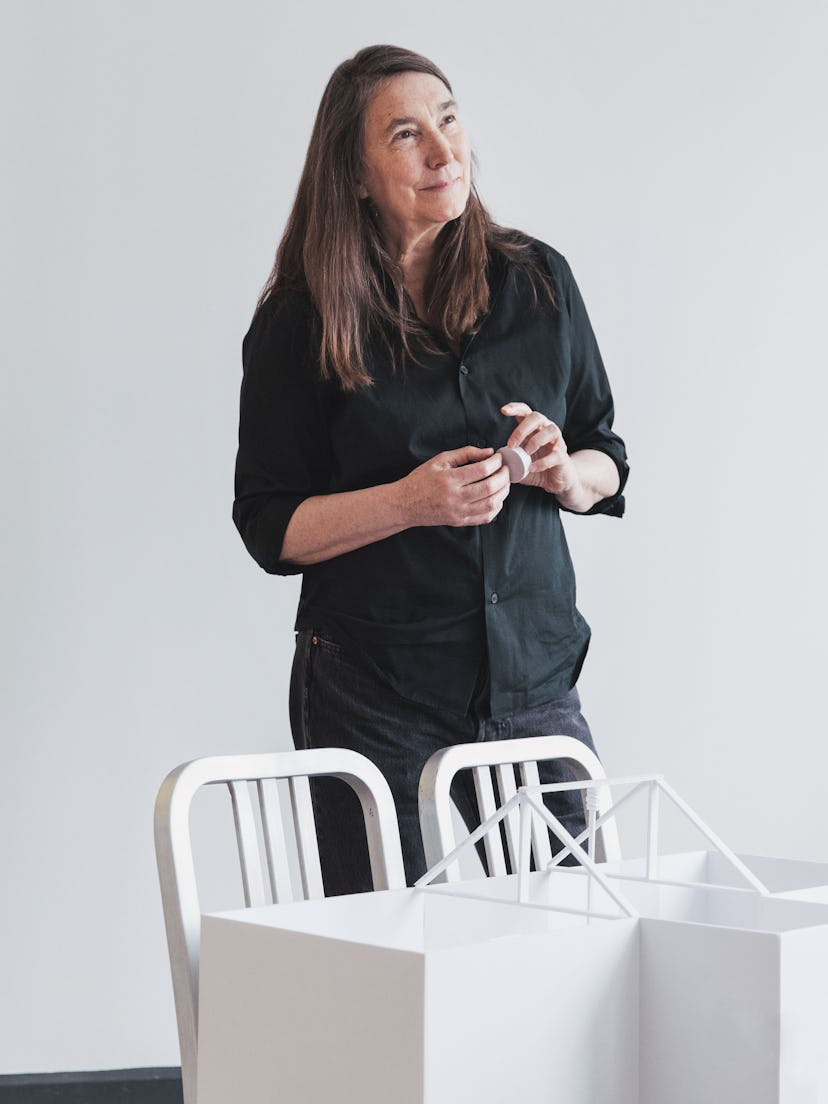Jenny Holzer’s Choice Words

Artist Jenny Holzer’s foreboding prose came to international attention in 1989 when she twisted her words around the Guggenheim museum’s rotunda in an epic LED installation. Almost 30 years later, lyrical snippets like “Abuse of power comes as no surprise” feel just as urgent. In 2004, the New York artist shifted her focus from writing to appropriating declassified government documents—as a way to bring the unsung atrocities of the Iraq war to the forefront of the American consciousness. Monumentalized in her signature mediums—LED signage, paint, and masonry—these found texts take on a haunting new life. This summer, Holzer’s new and old work come together at Hauser & Wirth’s Somerset compound in one ambitious retrospective. Here, the artist sheds some light onto her process.
Jenny Holzer’s Softer Targets is on view through November 1st at Hauser & Wirth Somerset.
1
Holzer in her Brooklyn studio.
Photo by Dustin Aksland.
2
“I didn’t really intend for the Somerset show to be a retrospective, but when I started to think about what should go in each specific room, I became curious. What have I done?”
Photo by Dustin Aksland.
3
“I don’t use social media. I take photographs all the time, so if anything I would use Instagram. I would have to give up my Blackberry first.”
Photo by Dustin Aksland.
4
“I can’t really paint. I just worry and gesticulate. I’m totally dependent on people who actually know how to do things because I’m an idea person.”
Photo by Dustin Aksland.
5
“Whenever possible I work with the same people. It’s a problem now that I’m getting so old that I’m outliving people. It’s regrettable when we’ve known each other and worked together since the 80s.”
Photo by Dustin Aksland.
6
“I meddle as much as possible.”
Photo by Dustin Aksland.
7
“My first and best sign guy, Paul Miller, an MIT grad, had a real yen for adventure. If it was especially hard he wanted to do it. He was the man who designed the sign for the Guggenheim.”
Photo by Dustin Aksland.
8
“I have to stop reading the documents sometimes. It’s disturbing and distorting to live in them. But I’m more afraid of humans than documents.”
Photo by Dustin Aksland.
9
“We thought it would be interesting to show extreme, almost maniacal precision in faithfully transferring and caring for the materials. We are lavishing attention on it and proffering it to others as a way to say: ‘What do you think about this?’”
Photo by Dustin Aksland.
10
“Before the Somerset show, I haunted myself by always having photos of the space and the plans on my desk like a reproach.”
Photo by Dustin Aksland.
11
“The electronics have big minds, and so I want to pack much stuff in there. So that’s one reason for having a lot of old text. In the two new pieces for Somerset, I went to a great big collection of formerly secret documents, so that content would be rich for anybody unfortunate enough to stay with it for a long time.”
Photo by Dustin Aksland.
12
“I am working on a piece for the New York AIDS Memorial at the former Saint Vincent’s hospital. There will be a physical component in stone with Walt Whitman’s “Song of Myself” inscribed, but there will also be a projection component that will enable visitors to access a mobile archive of stories and hopefully add their own.”
Photo by Dustin Aksland.
13
“I feel really good about this one.”
Photo by Dustin Aksland.